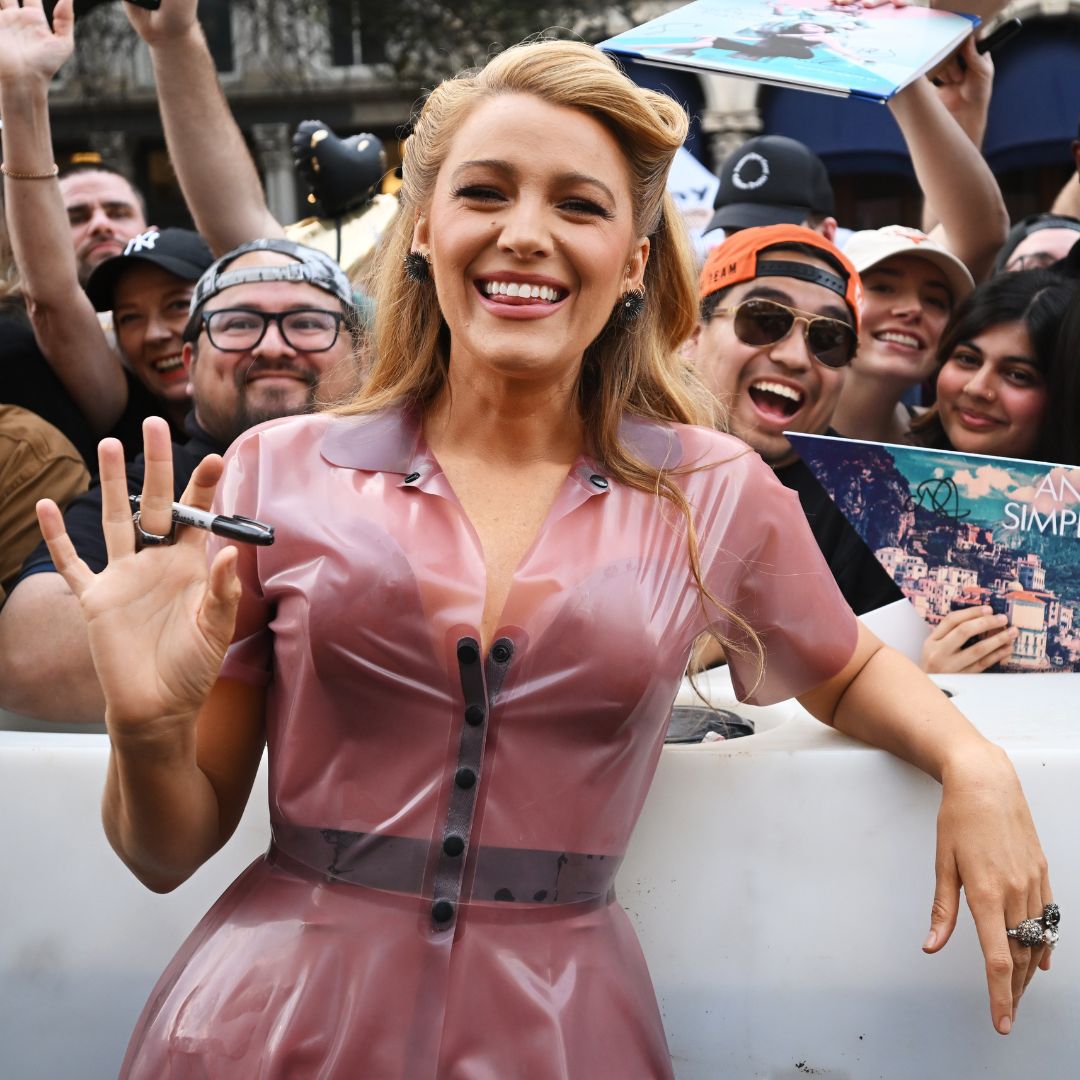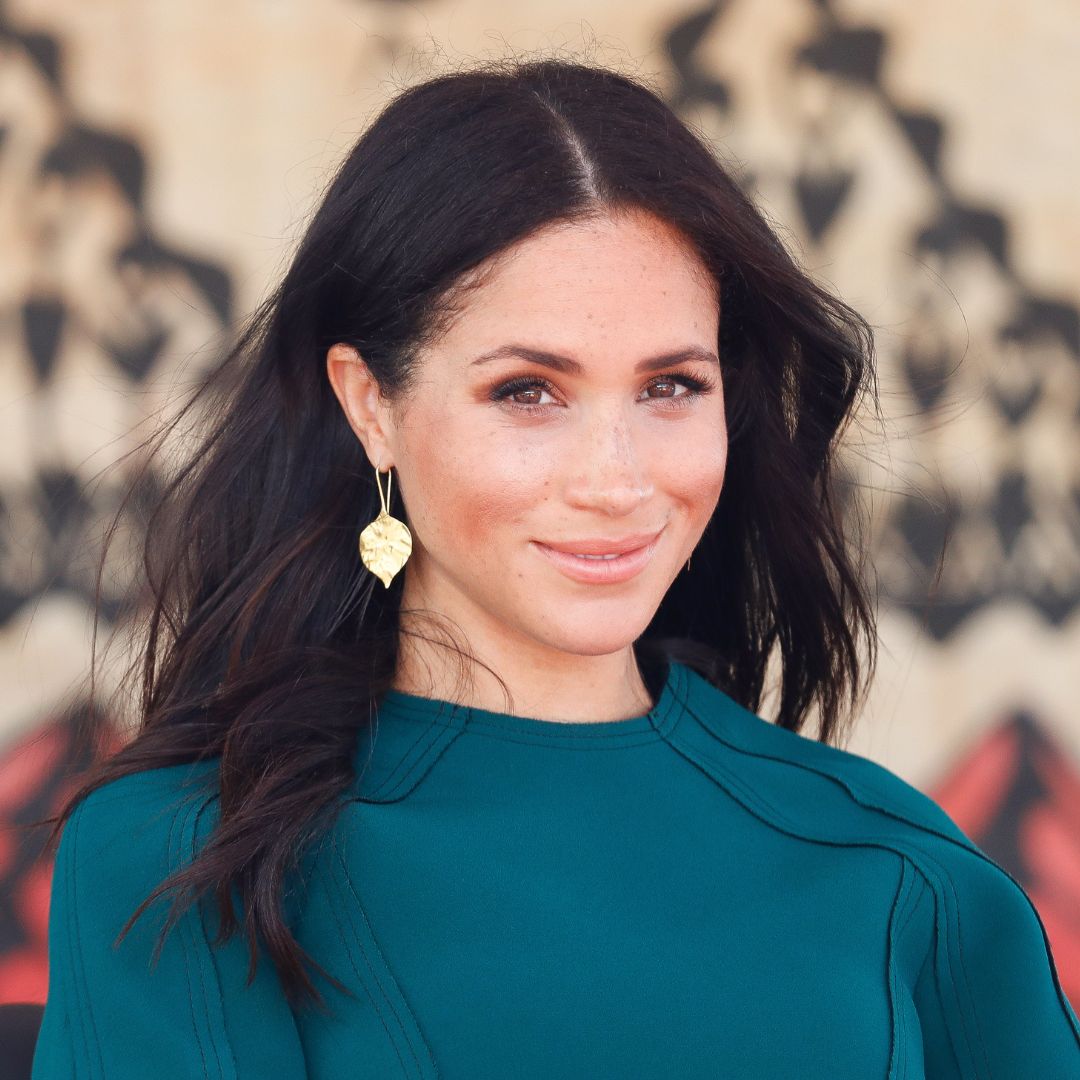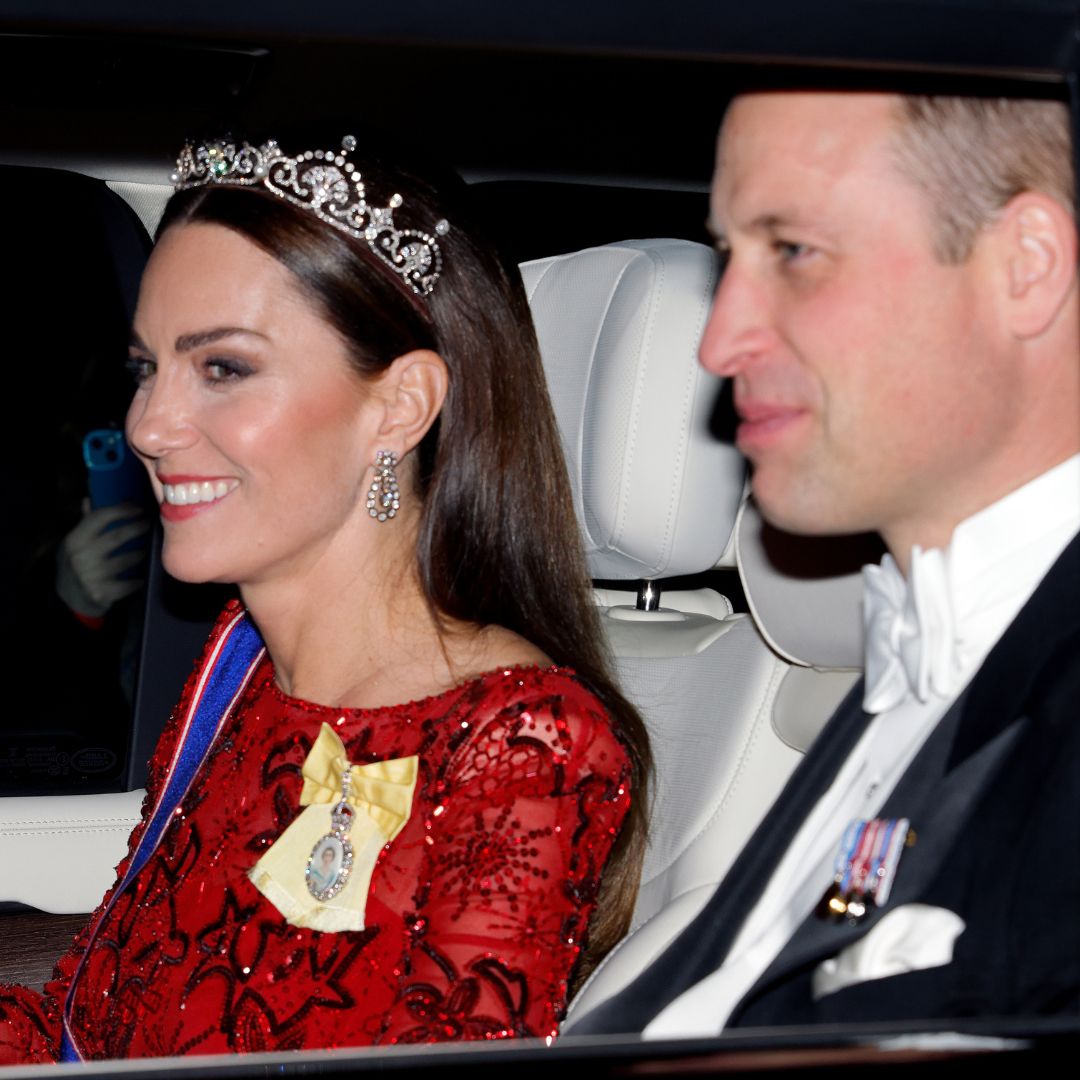The Priscilla costume designer talks us through her favourite looks from Sofia Coppola’s stylish new film
Costume stylist Stacey Battat chats to Natalie Hughes about working with Coppola and falling in love with clothes
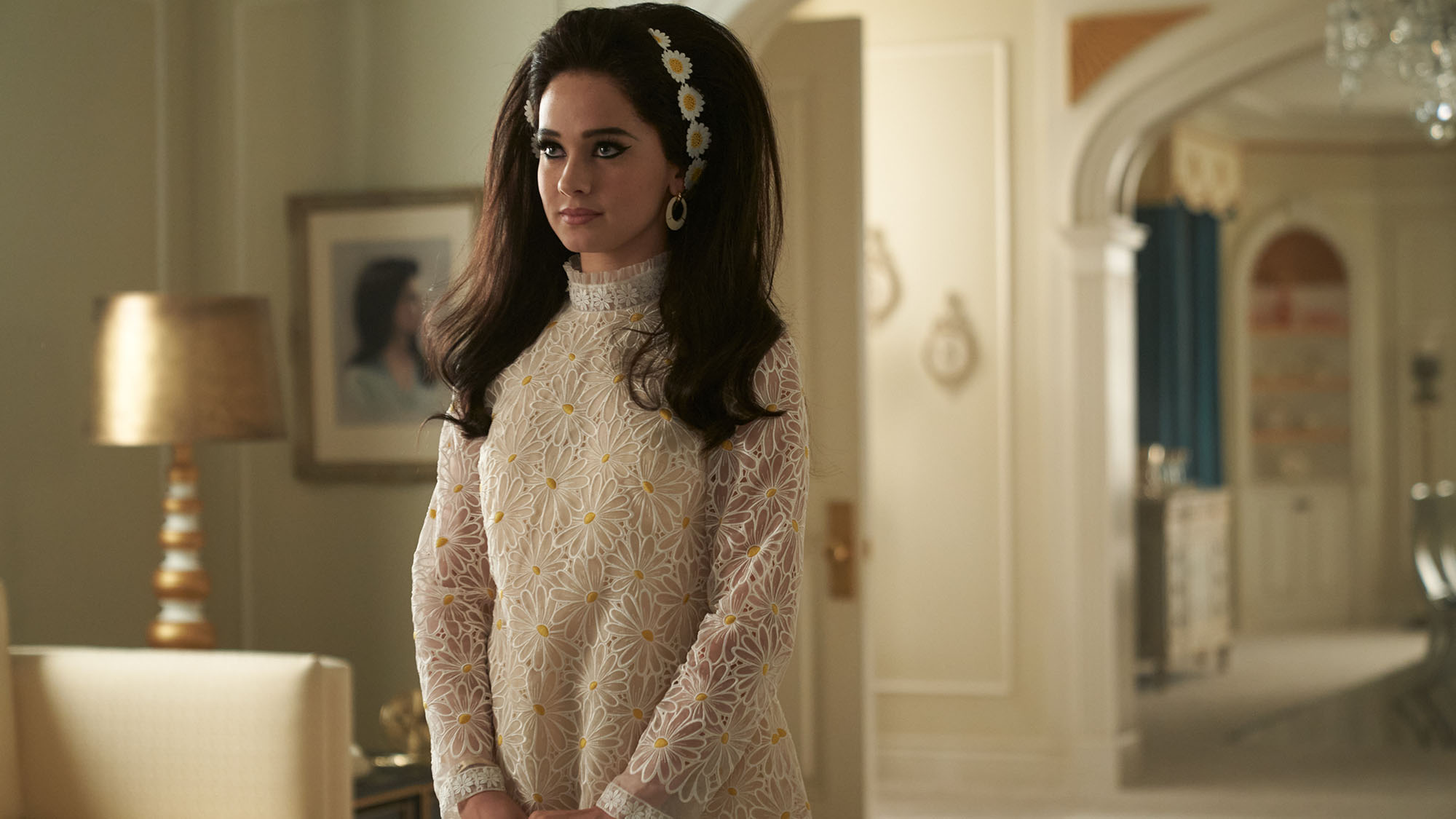
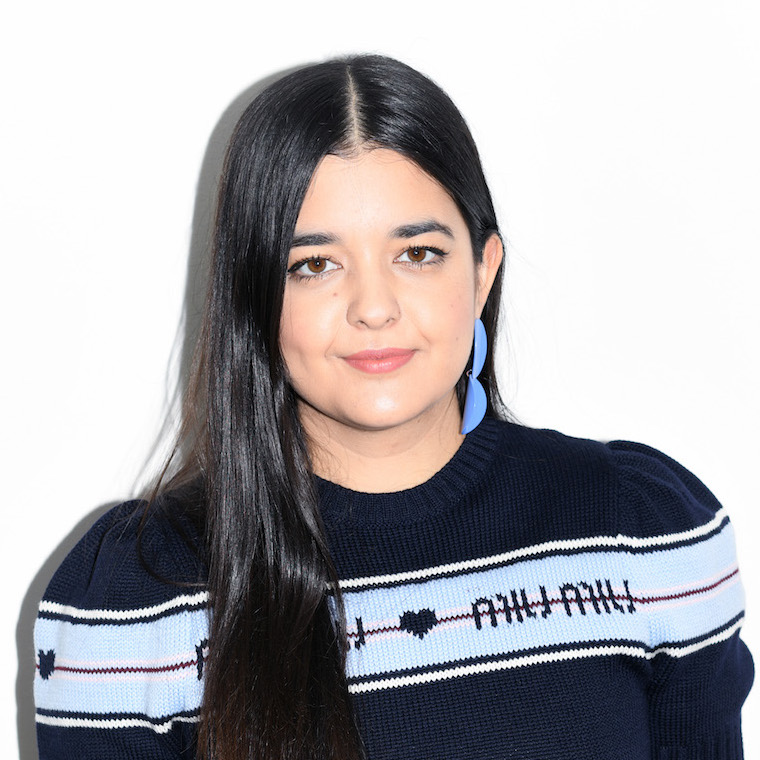
It wouldn’t be an exaggeration to say that Stacey Battat has something of a dream job. The LA-based costume designer is the fashion force behind some of the most stylish films you’ve seen, including Sofia Coppola’s The Bling Ring, The Beguiled and now Priscilla – an adaptation of Priscilla Presley’s memoir, detailing the unseen story of her courtship with and turbulent marriage to Elvis, starring Cailee Spaeny and Jacob Elordi.
For Priscilla, Battat (who has worked with Coppola since 2010’s Somewhere) designed costumes that span three decades, including demure ‘50s petticoat dresses and candy-coloured ‘60s shifts bedecked with bows. Battat and her team recreated many of Priscilla’s documented outfits from scratch, with a generous helping of vintage.
When it came to the iconic lace wedding dress, which the real Priscilla had bought from a department store, the team took some creative licence and called upon Chanel. ‘It’s the same shape as [Priscilla's] real dress. But then it takes influences from the contemporary lacework of Virginie Viard [creative director at Chanel].’
I spoke to Battat about working with Coppola, her favourite looks from the film, and what first ignited her love of clothes.
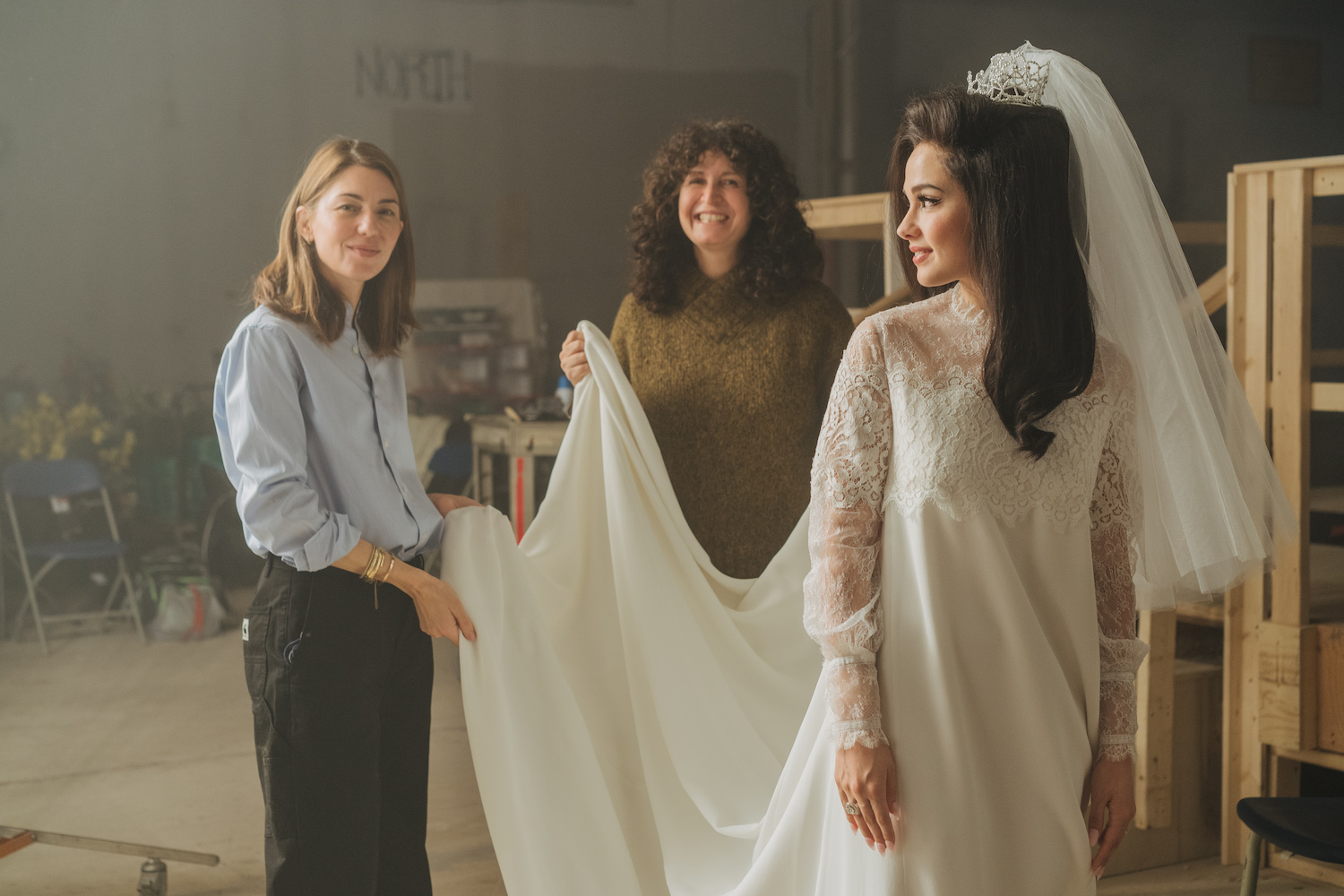
Sofia Coppola, Stacey Battat and Cailee Spaeny on the set of Priscilla
Hi Stacey, congratulations on Priscilla – the costume design was out of this world. You’ve collaborated with Sofia Coppola several times before; what was the biggest difference with this film?
Only that we had such a short timeframe. You know, it really speaks to the fact that Sofia [Coppola] and I have worked together so many times that we have a shorthand – I know what she means when she says something. And there was just a lot of trust. I feel like we didn't look at every single thing together, because there was no time to do that. I was making clothes up until literally the last scene in the movie, when we were putting a stitch in!
How does your collaborative creative process usually begin?
Marie Claire Newsletter
Celebrity news, beauty, fashion advice, and fascinating features, delivered straight to your inbox!
Sofia makes a moodboard that's really about tone and the emotion of the film, and that sort of thing. A lot of times it’ll have a William Eggleston photo, or specific kinds of photos that are not about, you know, a specific couch or dress, but rather about texture and mood.
With Priscilla I just took that and then started working on a colour palette. The costumes are a big part of telling the story. In the film, we’re ageing Priscilla from 14 to 27 and we're not really telling you what year it is. It’s the costumes that are telling you what year it is.
I wanted to relegate [Elvis] to the background because I know Sofia’s storytelling and it's Priscilla's story, right?
I started with a colour palette that was initially based on photos of Priscilla and Elvis that I had seen and then I looked through magazines and other historical references from the time and created three colour palettes. Elvis was never going to wear red even though he did actually wear red in the early ‘60s. I wanted to relegate him to the background because I know Sofia’s storytelling and I know that it's Priscilla's story, right? Elvis’s palette was the kind that you would usually use for background people – greys, blacks, beige – whereas Priscilla’s was brighter.
A note that Sophia had given was, ‘I want it to feel sad in Germany and feel like the sun comes out in Memphis.’ It's great to have worked with someone so much and to speak the same language as them because I understood that.
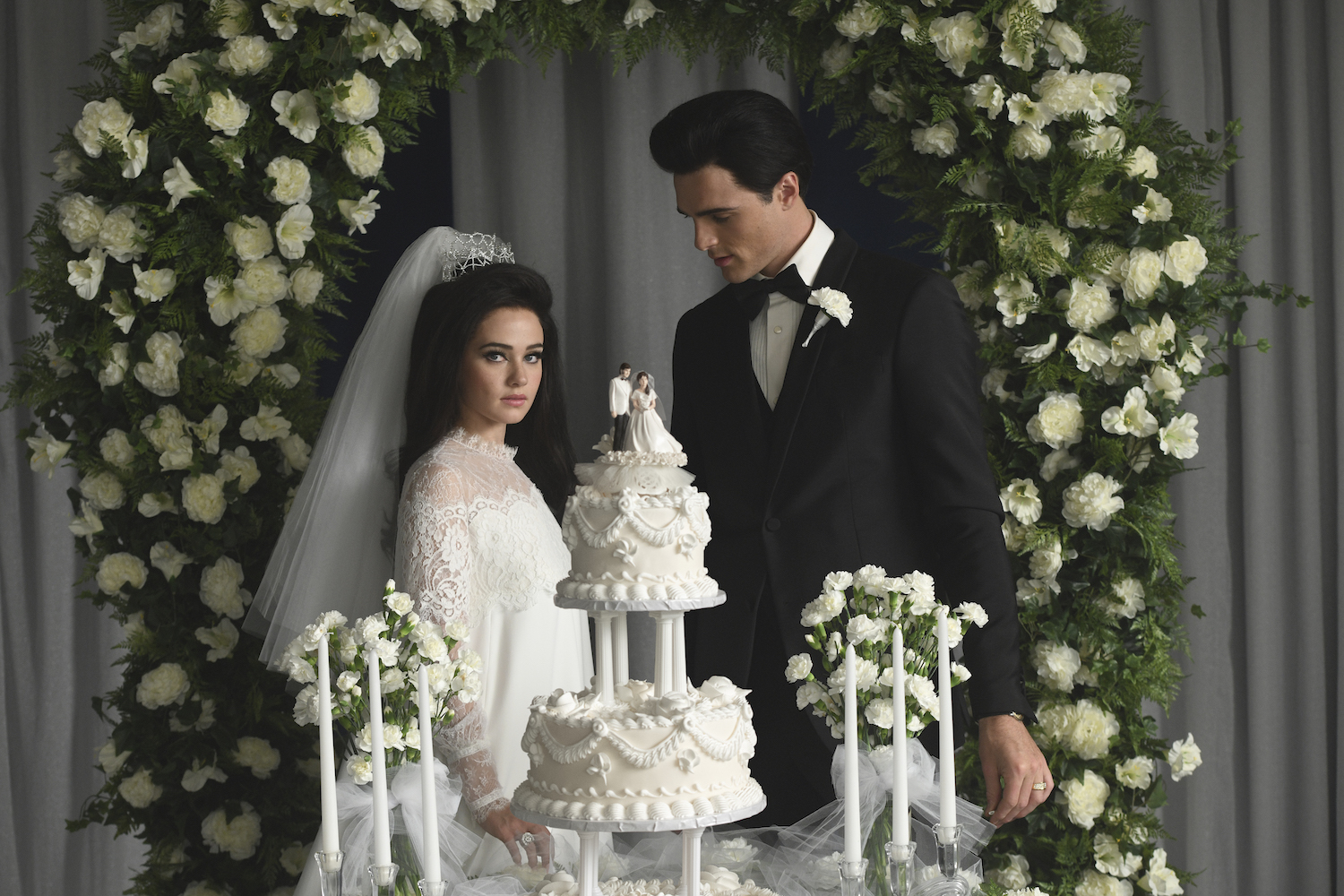
As you say, the film spans decades. Is that the first time you've worked on a film that does that?
Yes, and I didn’t want it to be jarring. I think people relate to certain ideas of what it means to be in the ‘60s and what it means to be in the ‘70s, like maybe a short shift dress is ‘60s and a pair of bell bottoms is ‘70s. But there's a whole transitional area between 1968 and 1972! So I tried really hard to make sure it flowed seamlessly and that there wasn’t a jump. The timeline is much more nuanced.
I bet you come across some beautiful pieces on your travels and in your research phases.
Yeah, I do. I'm always drawn to like the late ‘30s and early ‘40s. And I love the ‘70s, too – ‘70s Saint Laurent, I trawl the internet to find it.
I loved the abundance of bows in Priscilla’s outfits.
I once worked on this thing in the south a long time ago. And somebody had said, about a baby, ‘The bigger the bow, the closer to God.’ I took the bows from images [of Priscilla] that I saw but Priscilla and Elvis were in the south, so that phrase stuck in my mind.
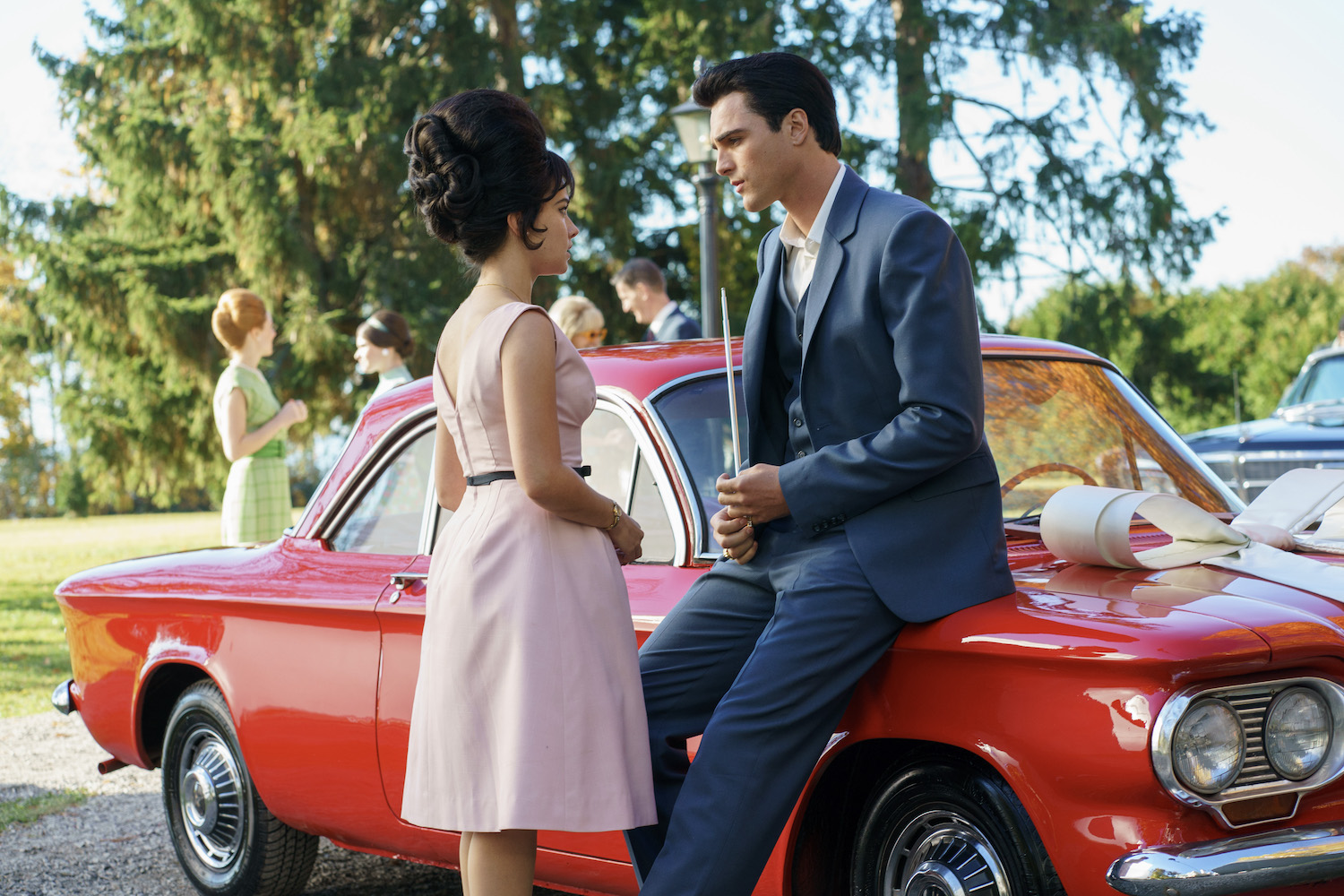
Did you use any vintage in the film?
We did. We altered a lot of the clothes to adapt to our storytelling. Most of our pyjamas were vintage; at the beginning I wanted them to be shorter and more girlish, so I went for cotton. And then later they became more silky and babydoll-like, not sophisticated. And then we went for more sophisticated things as Priscilla got older. We purchased most of that and adapted it for our storyline.
There are a few vintage pieces, but we made a lot of the clothes – primarily because we had a very specific story, a specific colour palette, and I wanted to tell Priscilla’s story well. Sometimes it's actually better and more efficient to make [the costumes] because it's easy to find a fabric but not easy to necessarily find, say, the skirt. And if you find the skirt, you also then have to alter it. So in a way, it’s more work and more expensive.
Sofia and I have worked together so many times that we have a shorthand – I know what she means when she says something.
Do you work closely with a tailor?
I don’t want to diminish any of my team – my whole team is really important – but the tailor-costume designer relationship is so important, because first of all, they have a skill that I do not possess. I cannot sew the way that Yulia and Cat can sew and I cannot make a pattern the way that Ahmed makes a pattern. I understand how to make one and say ‘It needs a dart here, or how do we slim it over here?’ and they have a better answer than I do.
The second thing is that we didn't have a sketch artist or anything like that on Priscilla; we didn't have the money for that. I can sketch but the more time I have, the nicer the sketch. The less time I have, the more basic it is, but what I can do is say, ‘This is the shape and this is where the darts and whatever should go.’
[The tailors and I] were in constant communication. I would give them a drawing, a magazine photo, even two different magazine photos and say, ‘It’s this bottom and this top and we need to do this, and put a pocket here, and this stitching,’ and it was like this Frankenstein instead of a drawing. I once sketched a dress on the back of a manila tag!
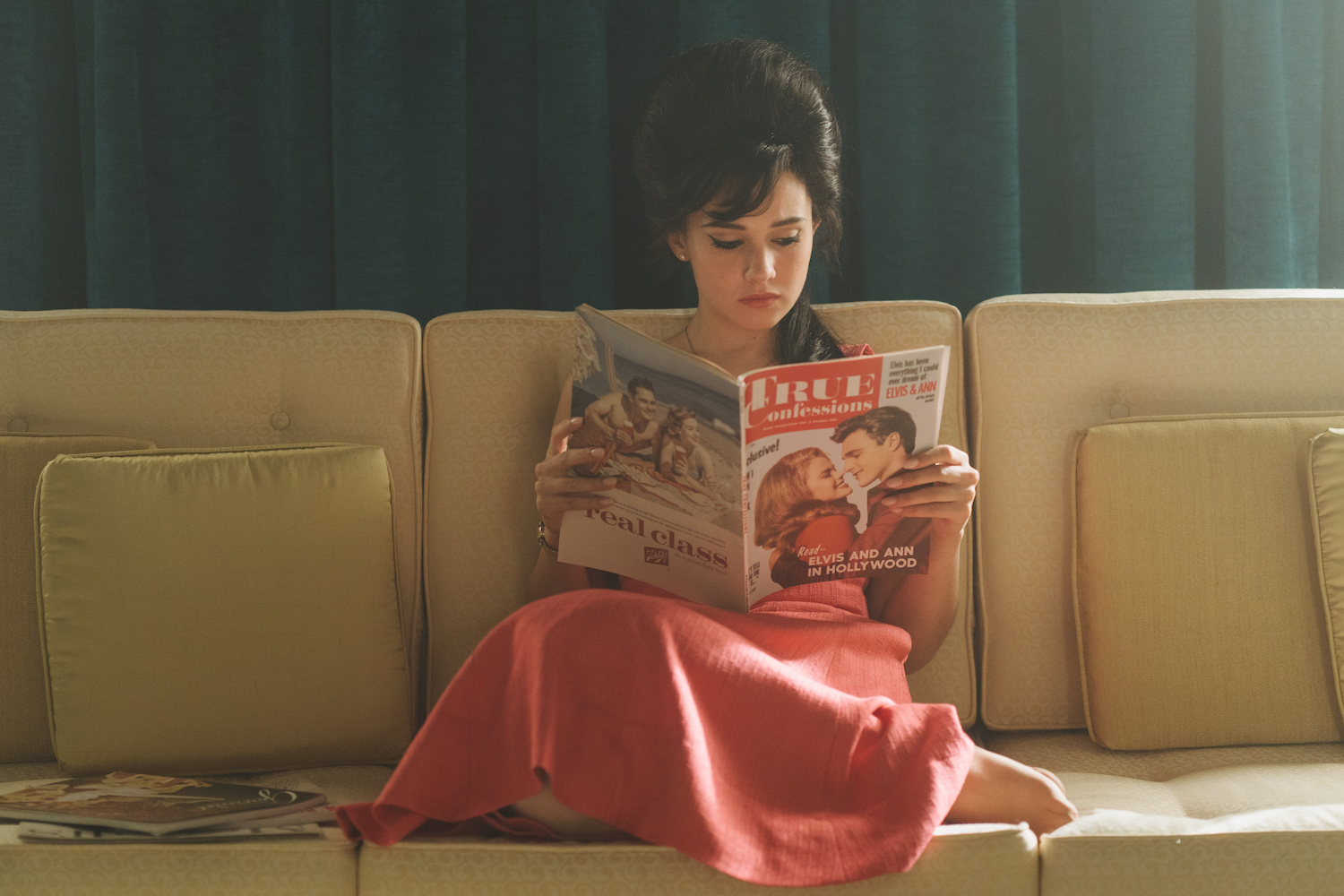
Do you keep hold of your sketches?
No, I wish I was better at keeping them. I draw a lot on my iPad because I can do layers, so I can change a colour or theme. I'm going to try to be better about keeping them. 10 years ago, Sofia's mom said to me, ‘You need to keep some of this stuff, because as women, we have a tendency to devalue our own art. And she's probably right.
What were your favourite looks from the film?
I have so many. There's a green dress that Priscilla wears when she is both pregnant and in the scene when she's on LSD. All the clothes she wears when she's pregnant, she also wears otherwise, because [in real life], she was really careful not to gain any weight. When she was pregnant, she wanted to, you know, maintain her figure, and I wanted to tell that story quietly.
I also love her dress where she waves goodbye in the early ‘50s. I love so many of them. It’s like asking me which is my favourite child!
How did you collaborate with hair stylist Cliona Furey and makeup artist Jo-Ann MacNeil on Priscilla’s looks?
The very beginning of their prep was with me, and we tore through the script, day in, day out. We had all of these code words, like ‘Baby Glam’ and ‘Memphis Glam’ so we could be like, OK so from scene 53 to 55 it’s Baby Glam, and so on. We just made sure we were on the same page with the clothes and the hair and makeup and I think we did a fantastic job. Actually, we each made one mistake… I'm not telling you where! We were moving so fast, the fact that we each only made one mistake is a miracle.
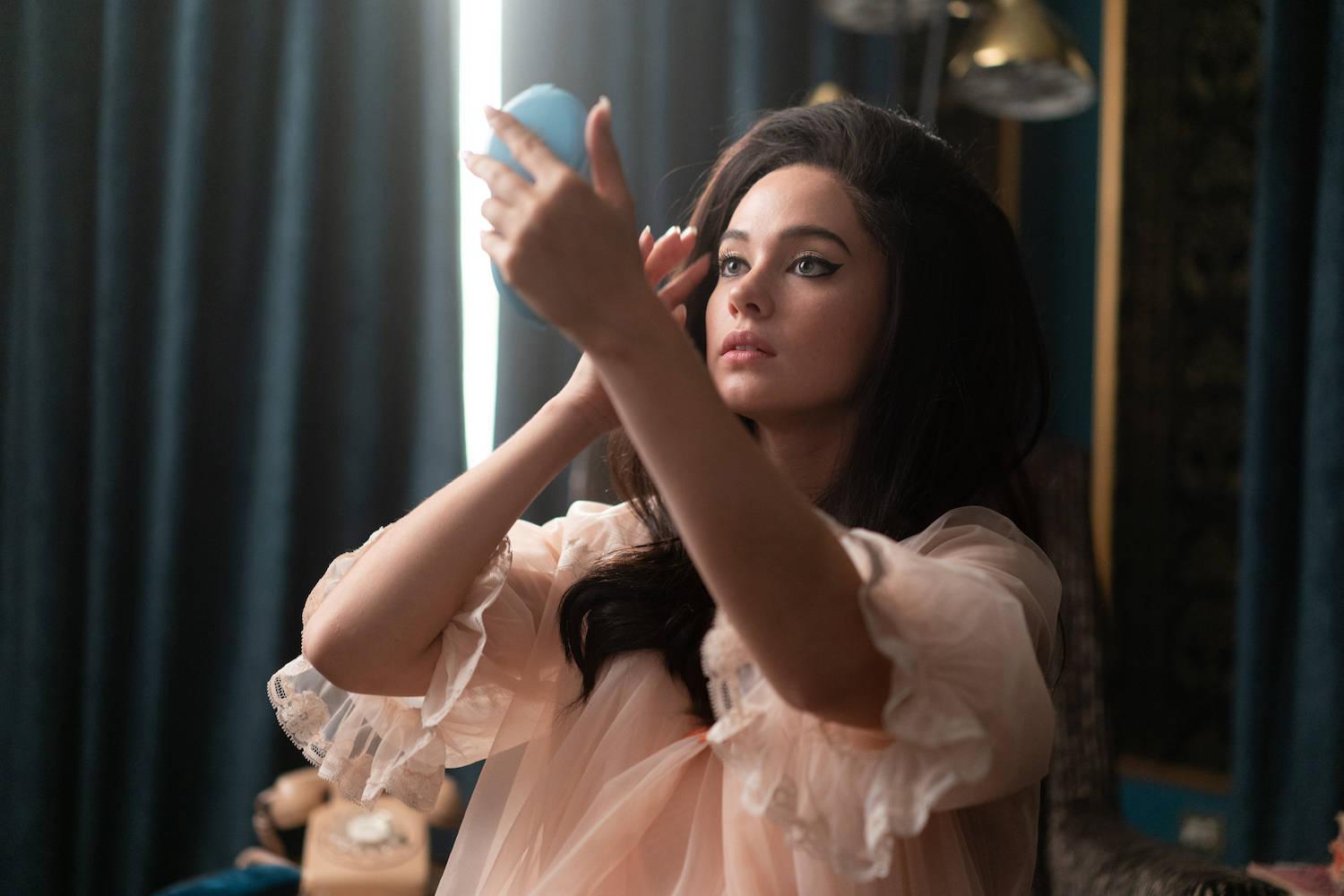
What first ignited your love of fashion and costume design?
When I was three years old, my mum and I went shopping – I don't remember where we were, but it wasn’t a fancy store. And there was this pink and green and yellow plaid skirt. It was the late ‘70s. And I cried and cried and cried until she bought it for me. But it was for a teenager, and I was a three-year-old kid! I would go to nursery school every day and I would drape the skirt on my body in different ways.
My mom will tell you, she was so embarrassed because for starters, she was an immigrant – I grew up in Connecticut, which is, you know, a homogenous town. So already, she felt out of place. And then she was like, ‘They think I don't have money to buy you clothes, please wear something else.’ And I wouldn't – I would wear that skirt every day for two years. I guess that was where it started.
You worked in fashion before you moved into costume design – tell me about that.
I didn't initially study fashion, I studied Women's Studies and Sociology. And then in my last year of school, I started taking classes at FIT [New York’s Fashion Institute of Technology]. I did draping and pattern-making and sketching and all that stuff. But I never finished – I ended up getting a job working for Marc Jacobs in the store. And then from that I kind of learned that there were all these other jobs – like I could be a stylist and whatever.
Even though I’d seen the Oscars and all that stuff, it didn't dawn on me until I was in my twenties that you could be a costume designer, I didn’t realise that was a job option. So I think that once it clicked that that was something I could do, it became appealing.
I love so many of the looks in Priscilla. It’s like asking me which is my favourite child!
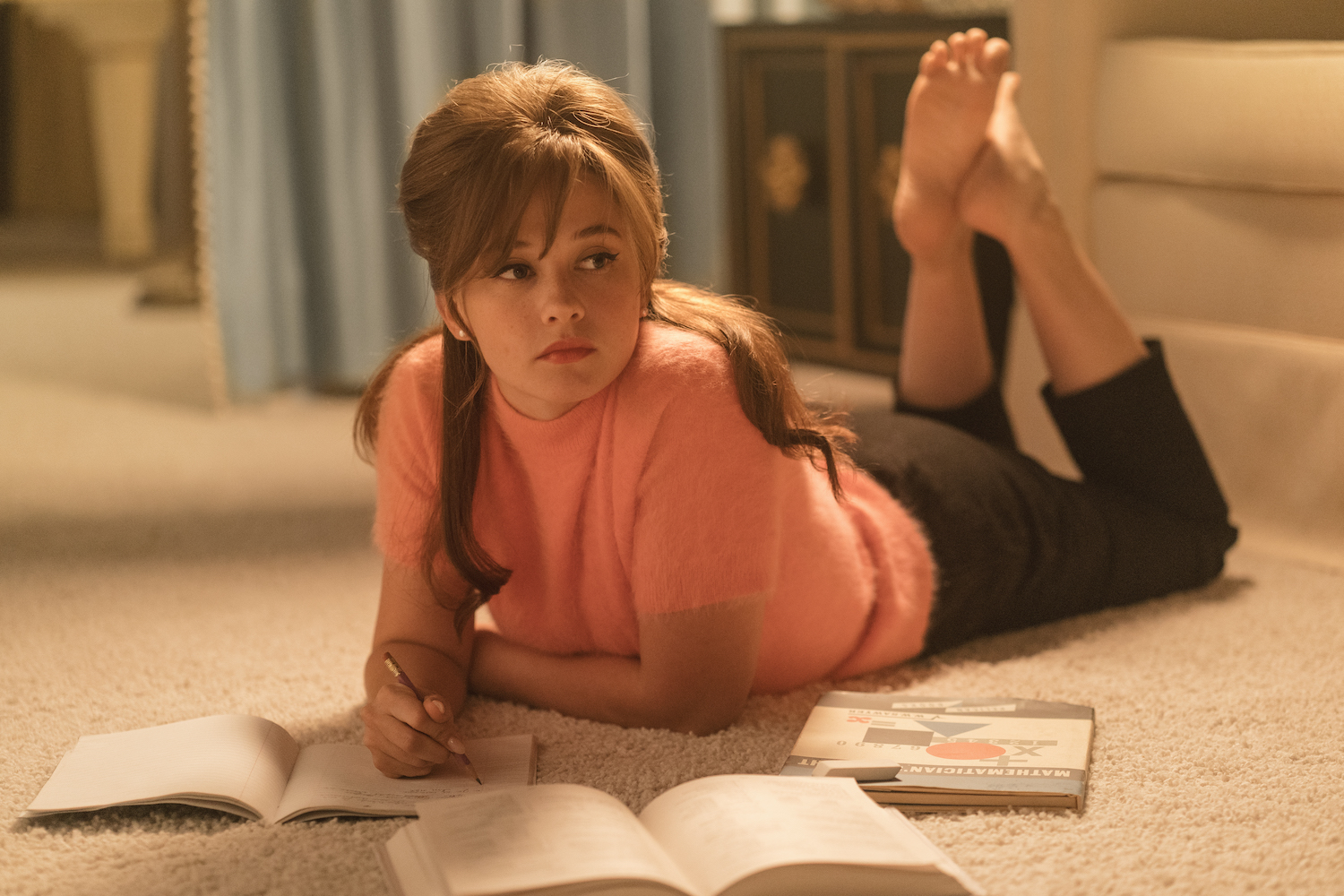
You also worked with Sofia Coppola on The Bling Ring, which is such an iconic film. What was that like?
I remember all of us being amazed at working in Paris Hilton's house. Being in her closet was amazing. I remember planting those Versace dresses in her closet. We didn't actually have [the actors] wear any of her clothes. They used her clothes as props when they were [in Paris’s closet] but we planted a bunch of stuff that then they would steal and wear later, which was fun. I remember those Versace dresses specifically because they were day-glo. And there were two of them – one was green and one was yellow.
What have been your favourite films to work on?
I love The Beguiled in its understatedness. I love the ways in which we were able to be creative with [costuming the characters], because they only had a few costumes and changed their collars and their cuffs every day. The necklines of their dresses had little snaps, and we just snapped in new collars and new cuffs. If you watch it and pay attention to that, you'll see it and it's a really subtle detail. I love that movie. So I'd say Priscilla and The Beguiled.
What are you working on at the moment?
I’m about to work with [producer] David Siegel and [director] Scott McGehee – the second movie I ever did was with them. They are making a film based on a Pulitzer Prize-winning book called The Friend, about a woman who inherits a Great Dane. She’s being played by Naomi Watts. I'm happy to work with people that I like, I think that’s important.
After that, I will be working on a very exciting project that may or may not star an American icon. I hope that one comes to fruition.
Priscilla is out now in UK cinemas

Natalie Hughes is a freelance writer. She writes and edits fashion show reviews, trend reports, designer interviews, and features on her specialist subject, vintage and pre-loved. Natalie has worked in the fashion industry for 16 years, as a contributor to publications including Harper's Bazaar, Elle and Who What Wear; consultant for the British Fashion Council, Christian Louboutin, and more; and senior editor at Matches and Net-a-Porter.
